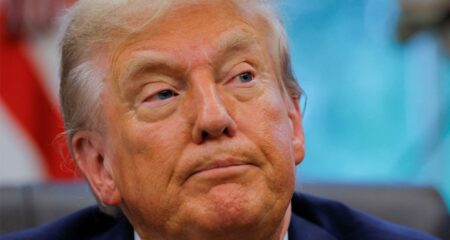What is there to say with bitcoin at US$100 000 for those of us who thought $10 000 looked nuts? After 15 years of cryptocurrency boom-and-bust cycles, rags-to-riches (and back to rags) stories, scams and bankruptcies, a carnival mood is back and hushing us naysayers.
Politicians are joining the party: Donald Trump is appointing pro-crypto officials, eyeing a bitcoin reserve and even hawking his own coin. So are punters, who are trying their hand and losing their shirts in the risky meme coin market. Like the 18th-century carnival of Rome attended by the poet Goethe — where all mad and foolish behaviour save for knifing and brawling was allowed — it’s the mystified tourists who are in the minority.
Right now, it’s Anthony Scaramucci of all people whose analysis makes the most sense: bitcoin’s new milestone shows it’s gained wider acceptance as a tradeable asset and portfolio investment, offering both big gains and gut-wrenching drawdowns (the last peak-to-trough fall after Covid-19 was around 76%).
The flipside of having no intrinsic value and a decentralised architecture with a huge energy footprint means that nobody’s using bitcoin to buy their groceries, though: only 7% of US consumers hold bitcoin, according to Deutsche Bank research, and a survey published last month by the UK Financial Conduct Authority found only 16% of people who owned cryptocurrencies used them for payments. Sceptics focus on the lack of real-world adoption — yet it’s speculators banking on so-called digital gold who’ve come out richer.
Another point in HODLers’ favour going into 2025 is betting on the power of the incoming US president — somewhat ironically for a movement originally forged by libertarian cypher-punks. Almost $10-billion has flowed into bitcoin exchange-traded funds since Trump’s 5 November US election win, which makes sense given the likely gains to be had from regulatory forbearance.
Gary Gensler’s departure from the Securities & Exchange Commission likely means more breathing space for tokens that have laboured under the “unregistered securities” label, making US-based Coinbase Global an obvious beneficiary of onshore trading flows and products – its shares have doubled this year. A friendlier regulatory atmosphere means we should expect more financial institutions to join in, even in risk-averse Europe.
Limits
Still, even pro-crypto folks know there are limits to this trade. We’re far from Friedrich Hayek’s vision of the “de-nationalisation of money”, in which the state would ideally cede monopoly control of currency to the competitive private sector. Trump’s recent call to Brics nations to accept dollar dominance shows he’s far from a crypto purist. A bitcoin strategic reserve, with all the risk involved for US taxpayers, is probably (let’s hope) a bridge too far.
And while digital gold is a handy moniker that allows optimists to imagine another tenfold rise for bitcoin — taking its market capitalisation to $20-trillion, or on par with gold — its price has recently been correlated with tech stocks on the Nasdaq index, suggesting real-world macroeconomic conditions need to remain healthy to maintain that speculative lustre. For now, they are: monetary policy is loosening and tech stocks like Nvidia and Palantir Technologies are rocketing (and have outperformed bitcoin this year). But if the twin engines of the US economy and stock market sputter — perhaps due to tariffs or inflation — it may undermine bitcoin’s attractiveness.
Read: Trump touts himself as the bitcoin president
There are other, longer-term questions posed by this rally. The first is just how dangerous the gamblification of finance could yet be in a world of 24/7 trading apps, legalised sports betting and instant payments — something crypto fans tend to dismiss. Like two sides of the same coin, crypto rallies expose punters to a proliferation of scams and get-rich-quick schemes. The urge to make money fast and replicate the seemingly out-of-reach gains of the early adopters can lead to horror shows like the Hawk Tuah memecoin or the baffling rise of Peanut the Squirrel’s token (market cap: $1.2-billion.) There will need to be re-regulation ahead, and maybe a total rethink of how the lines between investing and gambling are policed.
 The second is whether there is already a glimpse of a future financial system beyond the speculation. Complex systems take time to emerge — something crypto doubters might also miss. Maybe new experiments, such as First Abu Dhabi Bank and Libre Capital’s announcement this week of a stablecoin-lending pilot backed by tokenised money-market funds, are the budding indicators of where this Wild West of digital trading might end up.
The second is whether there is already a glimpse of a future financial system beyond the speculation. Complex systems take time to emerge — something crypto doubters might also miss. Maybe new experiments, such as First Abu Dhabi Bank and Libre Capital’s announcement this week of a stablecoin-lending pilot backed by tokenised money-market funds, are the budding indicators of where this Wild West of digital trading might end up.
The hope is that this carnival is close to maturity; but the history of financial manias, especially those with political encouragement, suggests a few more accidents are on the way. — (c) 2024 Lionel Laurent
Get breaking news from TechCentral on WhatsApp. Sign up here





